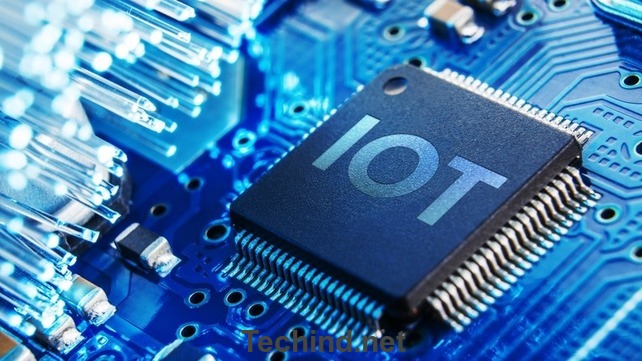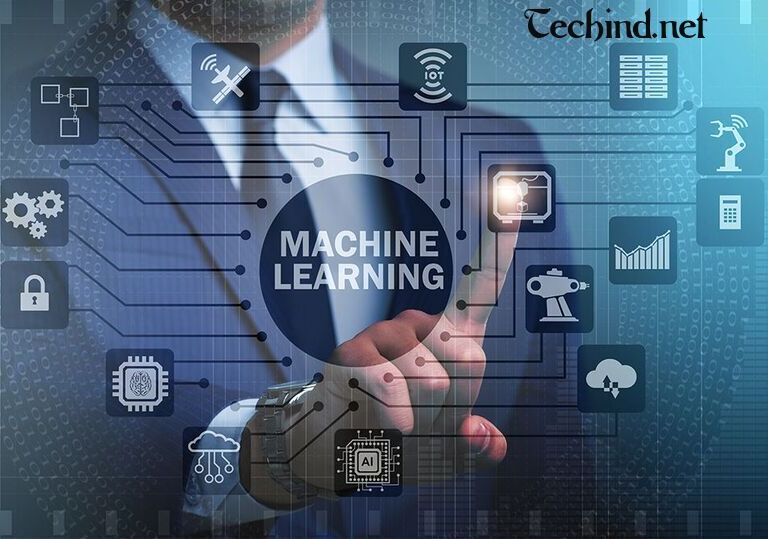
The Internet of Things (IoT) is a network of physical objects that are connected to the internet and can communicate with each other without the need for human intervention. These objects can include anything from smartphones and laptops to cars and home appliances.
The IoT is made up of devices that are equipped with sensors, software, and other technologies that enable them to collect and exchange data. This data can be used to monitor and control various aspects of the environment, such as temperature, humidity, and lighting.
The IoT has the potential to revolutionize the way we live and work by providing us with unprecedented access to information and control over our surroundings. However, it also raises concerns about privacy, security, and the potential for misuse of data.
History of IoT
The concept of the Internet of Things (IoT) has been around for several decades, although the term itself was not coined until 1999. The first internet-connected device, a toaster, was created in 1989 at Cambridge University. In the 1990s, the idea of a “smart home” began to emerge, with companies creating devices that could be controlled over the internet.
However, it wasn’t until the early 2000s that IoT began to gain momentum. The rise of wireless networks, the proliferation of smartphones, and the development of low-cost sensors enabled the creation of a wide range of internet-connected devices. This led to the creation of the first IoT-specific products, such as the Nest thermostat, which was introduced in 2011.
Today, IoT is a rapidly growing industry, with billions of devices connected to the internet and an estimated 22 billion devices expected to be in use by 2025. The technology has the potential to revolutionize a wide range of industries, from healthcare and agriculture to manufacturing and transportation. As the technology continues to evolve, it will be interesting to see how it shapes the world around us.
How does IoT work?
The Internet of Things (IoT) is a system of interrelated physical devices, vehicles, buildings, and other objects connected to each other through the internet. These devices are embedded with sensors, software, and other technologies that enable them to collect and transmit data.
The IoT system works in a simple way. The devices or things in the IoT network collect data from their surroundings using sensors and other technologies. This data is then processed and analyzed by the software that is installed on the devices themselves or on cloud servers. The analyzed data is then used to trigger actions or provide insights for the user.
For example, a smart thermostat installed in a home can collect data on temperature, humidity, and other factors. The data is then analyzed by the software installed on the thermostat or on cloud servers. Based on the analysis, the thermostat can automatically adjust the temperature to maintain a comfortable environment for the residents.
Why is Internet of Things (IoT) so important?
The Internet of Things (IoT) is an ecosystem of physical devices, vehicles, home appliances, and other items that are embedded with sensors, software, and network connectivity, enabling them to collect and exchange data. IoT has become increasingly important because it has the potential to revolutionize the way we live and work.
One of the most significant benefits of IoT is its ability to increase efficiency, reduce costs, and improve decision making. By connecting devices and systems, organizations can gain real-time insights into their operations, enabling them to optimize processes and make data-driven decisions. IoT can also help businesses identify new revenue streams and improve customer experiences.
Another critical benefit of IoT is its ability to enhance safety and security. IoT sensors can detect potential hazards, such as gas leaks, equipment malfunctions, and intruders, and alert the appropriate parties to take action. This technology can also improve public safety by enabling emergency responders to quickly and accurately locate people in distress.
IoT can also have a significant impact on sustainability. By monitoring energy usage and optimizing resource consumption, IoT can help reduce waste and lower carbon emissions. This technology can also be used to improve agriculture and food production by providing real-time data on crop health and soil conditions.
Benefits of IoT to Organizations
The Internet of Things (IoT) has revolutionized the way organizations operate and interact with their environment. The benefits of IoT to organizations are numerous, including:
- Improved Efficiency: IoT enables organizations to automate processes and tasks, which leads to increased efficiency and productivity. For instance, IoT sensors can be used to monitor and control the temperature, lighting, and other environmental conditions in an organization’s facility, leading to optimal energy consumption.
- Enhanced Customer Experience: IoT enables organizations to provide personalized and tailored services to their customers. For example, organizations can use IoT sensors to track customer behavior and preferences, which can be used to provide customized services and improve the overall customer experience.
- Cost Savings: IoT can help organizations reduce their operational costs by optimizing processes, reducing waste, and improving resource utilization. For instance, IoT sensors can be used to monitor and optimize the use of resources such as water, electricity, and raw materials.
- Improved Safety: IoT can help organizations improve safety by monitoring and controlling hazardous conditions in the workplace. For example, IoT sensors can be used to monitor air quality, detect leaks, and prevent accidents.
- Enhanced Data Collection and Analysis: IoT enables organizations to collect and analyze real-time data from various sources, leading to better decision-making and improved business outcomes.
Organizations stand to benefit greatly from the adoption of IoT. With its ability to improve efficiency, enhance customer experience, reduce costs, improve safety, and enable better data collection and analysis, IoT is a game-changer for organizations seeking to stay competitive in today’s fast-paced business environment.
Technologies that Enabled IoT
The Internet of Things (IoT) has become a reality due to the emergence of several technologies. These technologies have made it possible to connect devices and enable data exchange. Some of the technologies that have enabled IoT are:
1. Wireless Networks
Wireless networks, such as Wi-Fi, Bluetooth, and Cellular Networks, have made it possible for devices to connect to the internet without the need for physical connections. These networks have enabled devices to communicate with each other and exchange data.
2. Big Data
Big data technologies have made it possible to collect, store, and analyze vast amounts of data generated by connected devices. Big data analytics enable organizations to gain insights from data that was previously inaccessible.
3. Cloud Computing
Cloud computing has made it possible to store and process data on remote servers instead of on local devices. Cloud computing has enabled IoT devices to offload their processing requirements to the cloud, resulting in more efficient and cost-effective solutions.
4. Artificial Intelligence
Artificial Intelligence (AI) technologies such as Machine Learning and Natural Language Processing (NLP) have made it possible to analyze and understand the vast amounts of data generated by IoT devices. AI technologies enable organizations to gain insights and make predictions based on IoT-generated data.
Internet of Things (IoT) would not be possible without the emergence of these technologies. They have enabled us to connect devices, collect data, and gain insights that were previously impossible.
5. Sensors
Sensors are a critical component of IoT devices. They enable devices to collect data and provide real-time information. Sensors such as temperature, humidity, and motion sensors have made it possible to monitor and control various aspects of our environment.
Pros and Cons of IoT
The Internet of Things (IoT) is a network of interconnected devices that enable communication between objects and systems. It has its advantages and disadvantages, which are discussed below.
Pros of IoT
- Efficiency: IoT makes it possible for devices to communicate with each other and perform tasks without human intervention. This makes processes more efficient and saves time and resources.
- Cost savings: IoT can help reduce costs by automating processes, reducing energy consumption, and improving asset utilization. This can result in significant cost savings for businesses.
- Improved decision-making: IoT can provide real-time data and insights that enable businesses to make informed decisions. This can help improve operational efficiency and profitability.
- Enhanced customer experience: IoT can improve customer experience by providing personalized services and improving product quality through real-time feedback.
Cons of IoT
- Security risks: IoT devices are vulnerable to cyber attacks, which can compromise sensitive data and cause damage to systems.
- Privacy concerns: IoT devices collect a lot of data, which can be used for targeted advertising or sold to third parties without the user’s consent.
- Compatibility issues: IoT devices may not be compatible with existing systems, which can create integration problems.
- Reliability issues: IoT devices may be prone to malfunctioning due to software issues or hardware failures.
While IoT has its benefits, it also has its drawbacks. It is essential to weigh these pros and cons carefully before implementing IoT solutions.
Conclusion:
The Internet of Things is so important because it has the potential to transform virtually every industry and aspect of our lives. As more devices and systems become connected, the benefits of IoT will only continue to grow.
The IoT system works by connecting devices and objects through the internet, enabling them to collect and transmit data that can be analyzed and used to trigger actions or provide insights. The Internet of Things represents a major shift in the way we interact with technology and the world around us, and it is likely to play an increasingly important role in our lives in the years to come.
![Error [pii_email_4dd09cddea0cd66b5592] with Outlook- Solutions that Will Work](https://techind.net/wp-content/uploads/2024/01/Error-pii_email_4dd09cddea0cd66b5592-with-Outlook-Solutions-that-Will-Work.png)
